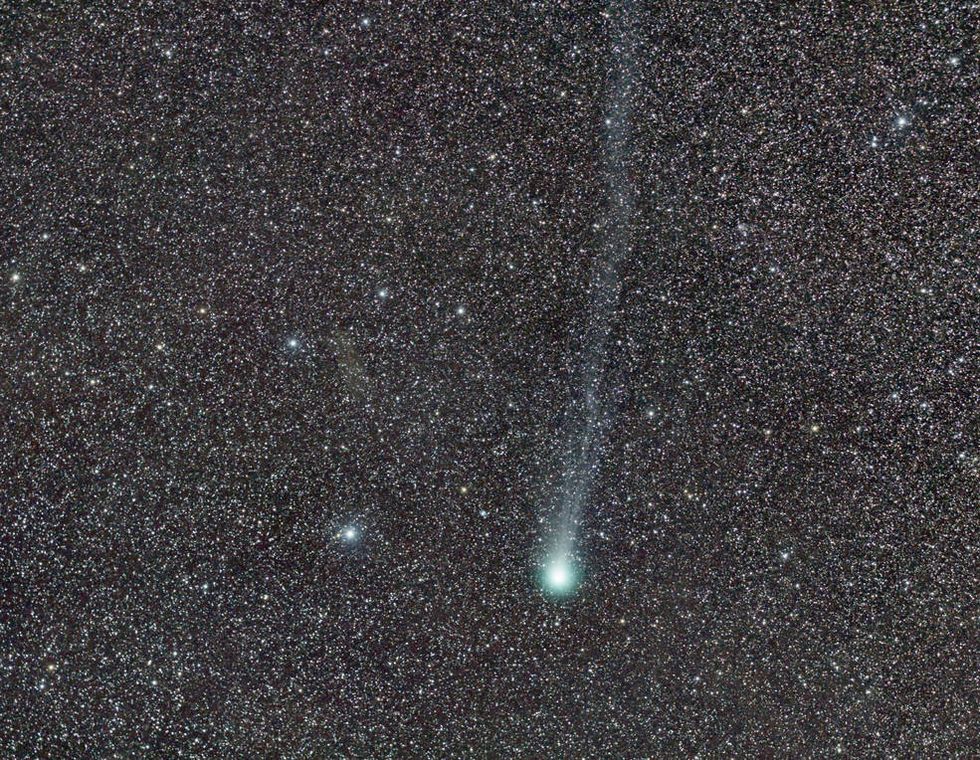
The comet Lovejoy pictured on February 22, 2015.
(Photo: Fabrice Noel via NASA)
(Photo: Fabrice Noel via NASA)

It's happy hour on the comet named Lovejoy, according to NASA.
The agency announced late last week that Lovejoy, or C/2014 Q2 more technically, was spewing ethyl alcohol, the same kind in alcoholic drinks, and a type of sugar into space. The reason why the observation was exciting is because scientists studying this believe that comets could have contributed some of the organic materials that helped spur life on Earth.
"We found that comet Lovejoy was releasing as much alcohol as in at least 500 bottles of wine every second during its peak activity," Nicolas Biver of the Paris Observatory in France, lead author of the study, said in a statement.

(Photo: Fabrice Noel via NASA)
In addition to the alcohol and glycoaldehyde, a sugar, the researchers also identified 21 other organic molecules being emitted from the comet.
These observations were made when the comet passed closest to the sun on January 30, 2015. In a news release about the discovery, which was published Friday in the journal Science Advances, NASA explained that energy from sunlight causes the molecules in the comet to glow at specific microwave frequencies. Scientists can then analyze these frequencies to identify the types of molecules and estimate their amount.

"The result definitely promotes the idea the comets carry very complex chemistry," Stefanie Milam of NASA's Goddard Space Flight Center, a co-author on the paper, said in a statement. "During the Late Heavy Bombardment about 3.8 billion years ago, when many comets and asteroids were blasting into Earth and we were getting our first oceans, life didn't have to start with just simple molecules like water, carbon monoxide, and nitrogen. Instead, life had something that was much more sophisticated on a molecular level. We're finding molecules with multiple carbon atoms. So now you can see where sugars start forming, as well as more complex organics such as amino acids — the building blocks of proteins — or nucleobases, the building blocks of DNA. These can start forming much easier than beginning with molecules with only two or three atoms."
Going forward, study co-author Dominique Bockelée-Morvan from Paris Observatory said researchers will try to determine where the organic material in the comets themselves came from.
"The next step is to see if the organic material being found in comets came from the primordial cloud that formed the solar system or if it was created later on, inside the protoplanetary disk that surrounded the young sun," Bockelée-Morvan said.